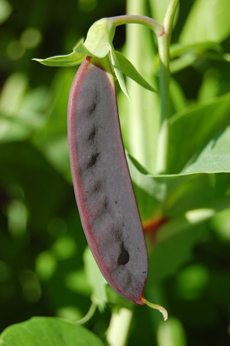FOOD FUN: Purple Snow Peas
|
Purple snow peas are relatively new to the marketplace, and may give some people a double take. Simply, they are snow peas bred to have a deep purple skin instead of the original green one.
The Shiraz pea variety was first developed in the United Kingdom in the early 2000s; the Midnight Snow and Sugar Magnolia varieties originated in the United States around the same time. However, there’s always a considerable lag to market, as breeders perfect the new produce and produce enough quantities for commercial introduction. The snow pea—purple, green or otherwise—grows in cooler climates, and has a peak season from mid-fall and throughout the winter months. Purple is a fun change from green snow peas, for recipes, salads or just plain snacking. Similar to their green siblings, purple snow peas have a slightly sweet flavor and a crunchy, meaty texture and are the same size as conventional snow peas—two to three inches in length. The pod encases petite, flat, green peas. Once the inner peas become visible through the skin, the snow pea is at its best eating quality. Purple snow peas can be used raw or cooked, in any recipe that calls for conventional snow peas: |
|
|
|
|
||
|
|
RECIPE IDEAS These recipes are from Melissas.com, which sells exotic produce including purple snow peas. |
|
|
SNOW PEA TRIVIA The purple snow pea is a member of the Fabaceae family, commonly known as the legume, pea or bean family. The species is Pisum sativum, which includes all peas. The purple snow pea is Pisum sativum var. macrocarpon; the green variety is Pisum sativum var. saccharatum. Snow peas, along with sugar snap peas, have edible pods. By contrast, the pods of field peas and garden peas are made of inedible fiber, requiring the peas to be shelled. While thought of as a vegetable, botanically speaking peas are a fruit: A member of the powerful flavonoid antioxidant group, anthocyanins been shown to have anti-inflammatory properties which boost the immune system and can help aid in the prevention of certain cancers. And they’re very low in calories. So: Eat up!
|
||




